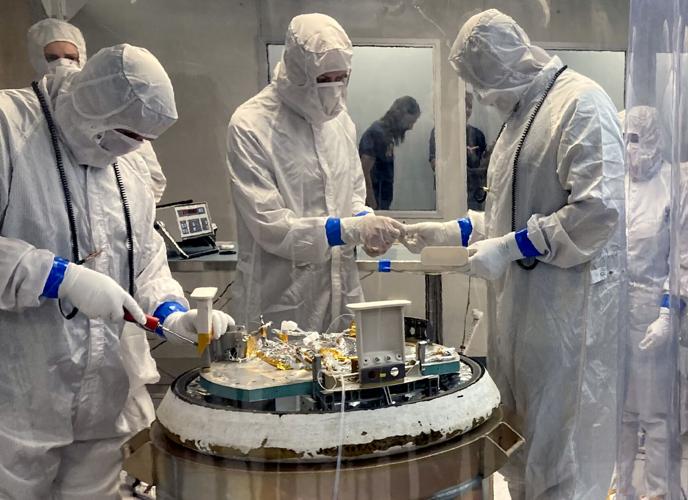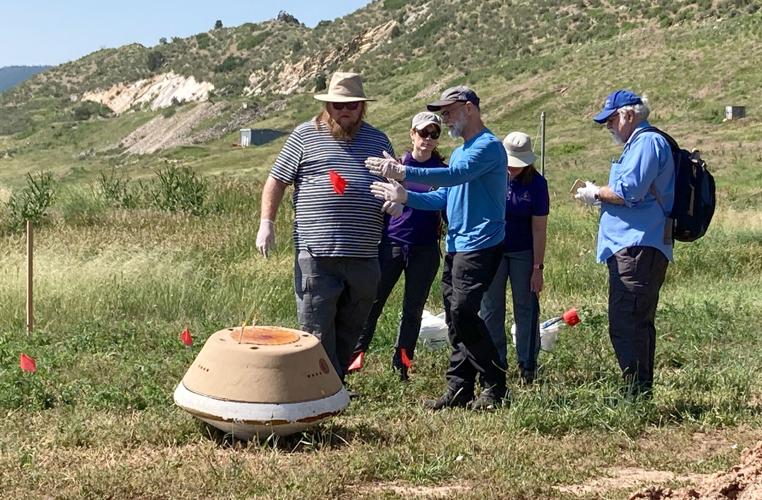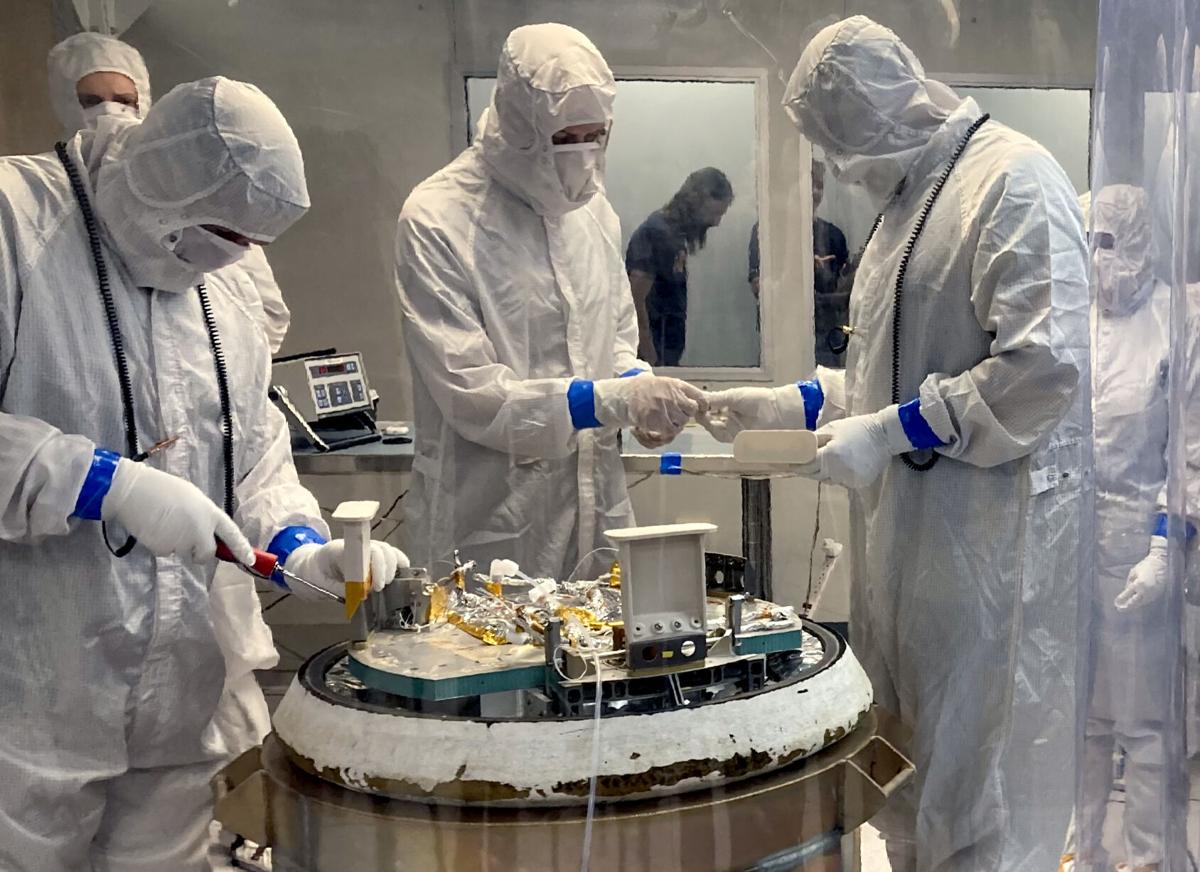How do you retrieve a special delivery from outer space that has taken almost 7 years and several billion miles to reach you?
Practice, practice, practice.
The University of Arizona-led OSIRIS-REx team is in full rehearsal mode for the upcoming arrival of samples collected by the spacecraft from the asteroid Bennu in 2020.
In recent months, team members have traveled to various locations across the country for planning sessions, training exercises and procedural reviews ahead of the big event on Sept. 24.
Last month, they were in Colorado. Last week, it was Utah. Next month, it’s back to Colorado and Utah again.
“We started in earnest about one year ago,” said UA professor Dante Lauretta, who is principal investigator for the OSIRIS-REx mission.
By the time the spacecraft’s sample-return capsule lands roughly two months from now, Lauretta estimates his team will have taken part in almost 30 rehearsals and reviews.
That includes more than a dozen drills to practice tracking the capsule during reentry and descent, safely recovering it from the landing zone in Utah, and preparing it in a clean room for transport to a specially built lab at Johnson Space Center in Houston, where its priceless cargo will be unpacked and examined for the first time.

Recovery team members from the University of Arizona and elsewhere practice recovering the OSIRIS-REx sample-return capsule during a rehearsal in June at Lockheed Martin Space headquarters outside of Denver.
“I am participating in many of the preparation events,” the UA’s top mission scientist said in an email. “There are too many to take part in (them) all.”
The main event
All of the practice is leading up to this:
At approximately 7:41 a.m. Tucson time on Sept. 24, a UFO-shaped capsule roughly the size of a truck tire is expected to begin its fiery descent through the atmosphere after being jettisoned toward Earth by the passing OSIRIS-REx spacecraft.
It should take the capsule about 13 minutes to reach the ground, carried by parachute to a spot somewhere inside a military-controlled, 250-square-mile landing zone at the Utah Test and Training Range, west of Salt Lake City.
Helicopters will speed the recovery team to the landing site, where they will visually inspect the capsule from a safe distance, then take its temperature to make sure it has cooled down enough from the blazing heat of reentry to be handled.
A safety team will plug the capsule’s pressure vents, cap any exposed electrical wires and check for signs of venting gas or other hazards.
Once it’s ready to be moved, team members will lift the roughly 100-pound package into a metal crate, wrap it in protective sheets and sling below one of the helicopters to be flown to a hanger on the range, where a temporary clean room will be set up.
There, the sealed sample container will be carefully removed from its shell of reentry shielding and readied for transport to Houston the next day on a military aircraft.
Everything will be recorded in painstaking detail throughout the process, from the marks left when the capsule hit the ground to samples of the soil and air at the landing site, which will be collected to help identify any contaminants that might have come into contact with the asteroid sample.
The primary objective of OSIRIS-REx is to bring back pristine, 4.5-billion-year-old rocks and dust left over from the formation of the solar system so scientists can use them to unlock new clues about the origin of the planets and life itself.
The primary objective of the capsule recovery operation is to not screw everything up at the last minute by polluting the sample with earthly moisture or microbes.
“Even though we’ll be landing in a desert, and even if it is a nominal landing and the capsule looks great, there are still organisms around,” Lauretta explained. “The risk of any of that material contacting the sample is really low, but it is not zero.”
Rocket science
OSIRIS-REx was launched on Sept. 8, 2016, and reached Bennu on Dec. 3, 2018, to begin almost two years of data collection and surveying in search of a safe landing spot.
The SUV-sized probe finally made history on Oct. 20, 2020, when it touched down on the asteroid’s surface for about six seconds to scoop up a cloud of pebbles and dust.
The sample-return capsule is believed to contain at least one full cup of material from Bennu, roughly four times the minimum amount originally sought by the $1 billion space mission.
The precious payload represents the first asteroid samples to be brought back by a U.S. mission — the Japanese space agency has done it twice already — and the largest haul of off-world material collected by NASA since Apollo 17.
The UA’s Lunar and Planetary Laboratory leads the OSIRIS-REx science team. NASA’s Goddard Space Flight Center in Maryland provides overall mission management and navigation. Lockheed Martin Space built the spacecraft and hosts flight operations at its headquarters just outside of Denver.
All the key players will gather in Utah late next month for the most elaborate rehearsal so far. On Aug. 30, a replica of the sample-return capsule will be dropped from a helicopter flying at 5,000 feet, so the team can test their radar and tracking cameras, then run through the full recovery procedure in the same terrain where the real thing will take place.
NASA's OSIRIS-REx spacecraft is cruising back to Earth with a sample it collected from the rocky surface of asteroid Bennu. Recovery team members from the University of Arizona and elsewhere are now rehearsing for when the spacecraft's sample-return capsule parachutes down into the Utah desert on Sept. 24.
UA President Robert Robbins won’t be there for that trial run, but he does plan to travel to Utah for the capsule’s return on Sept. 24.
His role doesn’t require any rehearsing, either. He said he’s going as an awe-struck spectator, there to cheer on the home team.
“I wanted to be there the first time I ever heard about it. The whole engineering and logistics part of this is just amazing,” Robbins said. “First of all, that you could land a spacecraft on an asteroid 300 million miles away with such precision, and then you could actually get a sample, bring it back and drop it at just the right time for it to land in the desert in Utah? I mean, that’s really incredible.”
Even an internationally accomplished cardiac surgeon like Robbins can’t help but be impressed by the science behind OSIRIS-REx.
“I used to tell my trainees when we were doing heart surgery, ‘You know, this is not that hard. It’s not rocket science,’” the UA president said with a chuckle. “Doing heart surgeries? That’s a tap-in birdie compared to this stuff.”






